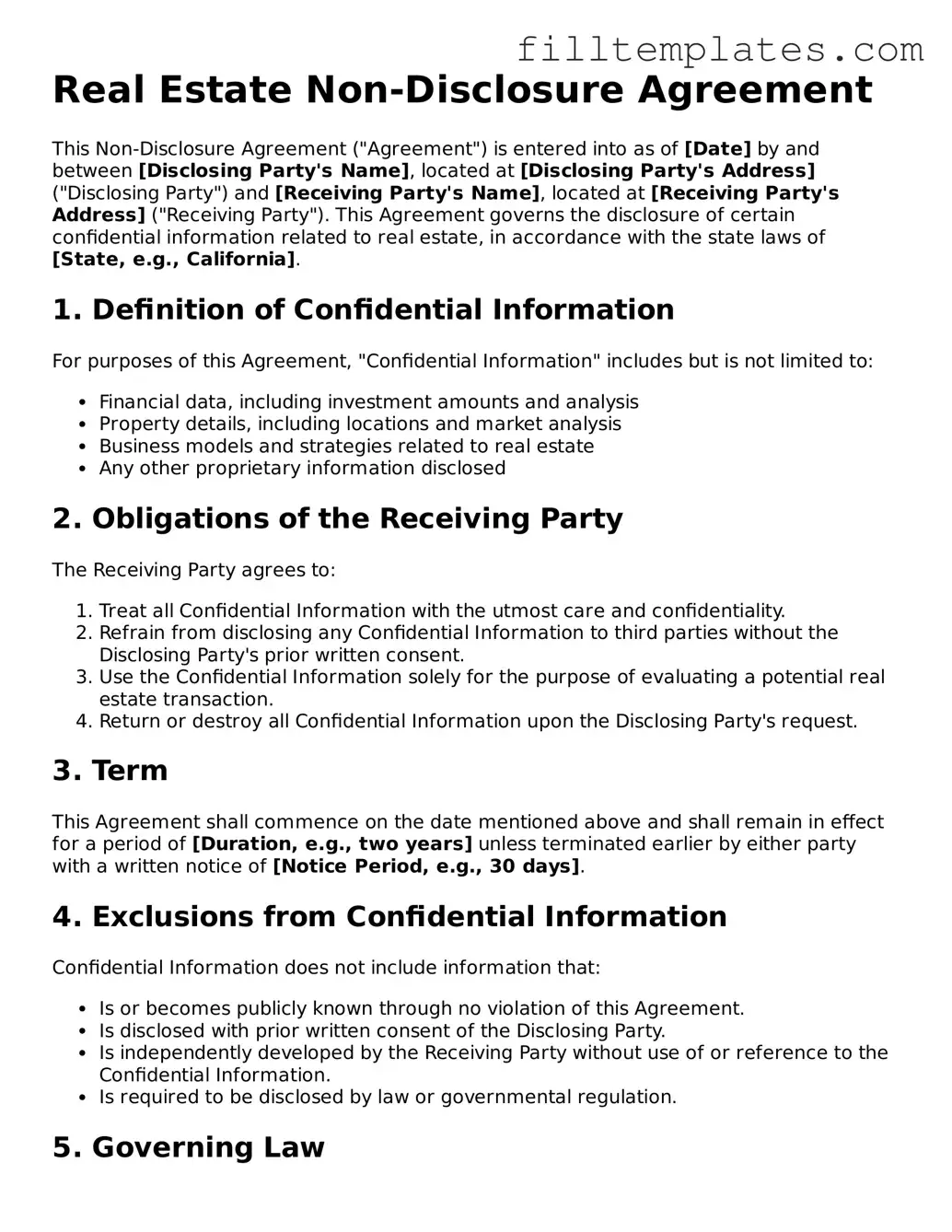Real Estate Non-Disclosure Agreement
This Non-Disclosure Agreement ("Agreement") is entered into as of [Date] by and between [Disclosing Party's Name], located at [Disclosing Party's Address] ("Disclosing Party") and [Receiving Party's Name], located at [Receiving Party's Address] ("Receiving Party"). This Agreement governs the disclosure of certain confidential information related to real estate, in accordance with the state laws of [State, e.g., California].
1. Definition of Confidential Information
For purposes of this Agreement, "Confidential Information" includes but is not limited to:
- Financial data, including investment amounts and analysis
- Property details, including locations and market analysis
- Business models and strategies related to real estate
- Any other proprietary information disclosed
2. Obligations of the Receiving Party
The Receiving Party agrees to:
- Treat all Confidential Information with the utmost care and confidentiality.
- Refrain from disclosing any Confidential Information to third parties without the Disclosing Party's prior written consent.
- Use the Confidential Information solely for the purpose of evaluating a potential real estate transaction.
- Return or destroy all Confidential Information upon the Disclosing Party's request.
3. Term
This Agreement shall commence on the date mentioned above and shall remain in effect for a period of [Duration, e.g., two years] unless terminated earlier by either party with a written notice of [Notice Period, e.g., 30 days].
4. Exclusions from Confidential Information
Confidential Information does not include information that:
- Is or becomes publicly known through no violation of this Agreement.
- Is disclosed with prior written consent of the Disclosing Party.
- Is independently developed by the Receiving Party without use of or reference to the Confidential Information.
- Is required to be disclosed by law or governmental regulation.
5. Governing Law
This Agreement shall be governed by and construed in accordance with the laws of the state of [State].
6. Signatures
IN WITNESS WHEREOF, the parties have executed this Non-Disclosure Agreement as of the date first above written.
__________________________
[Disclosing Party's Name]
Title: [Title]
__________________________
[Receiving Party's Name]
Title: [Title]
